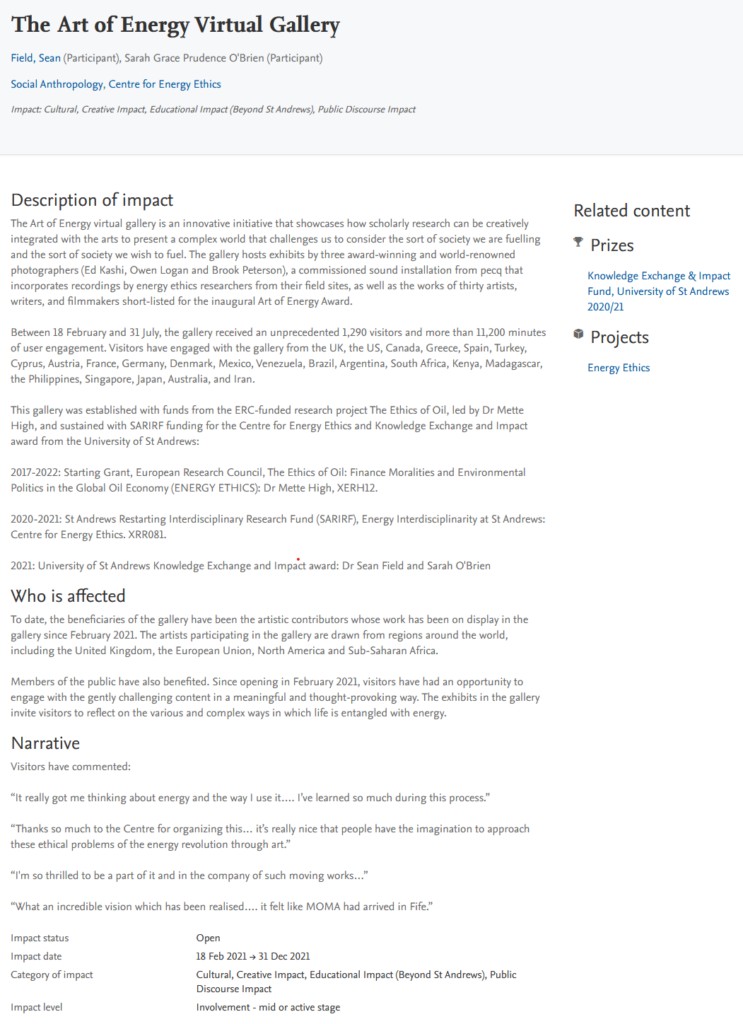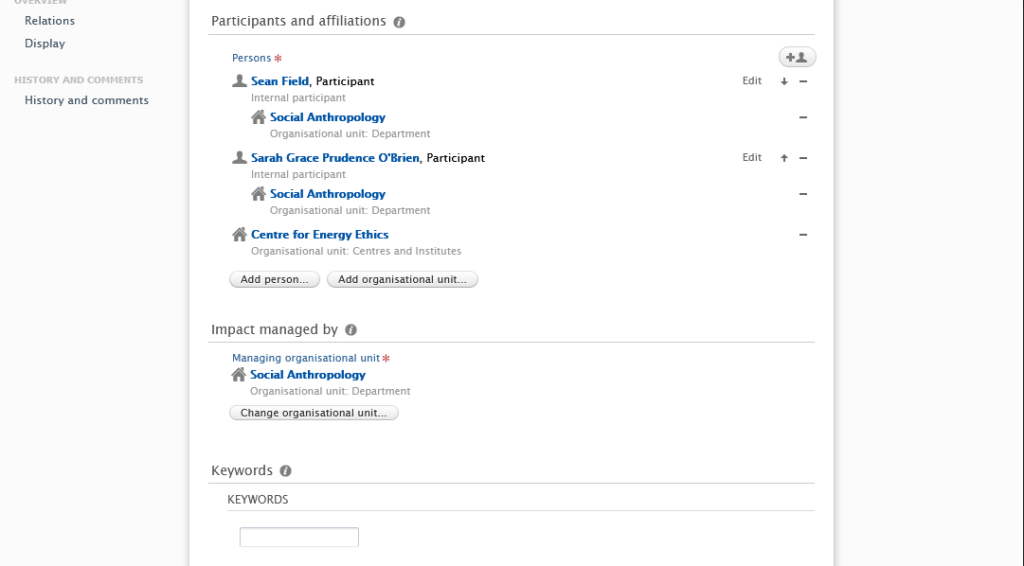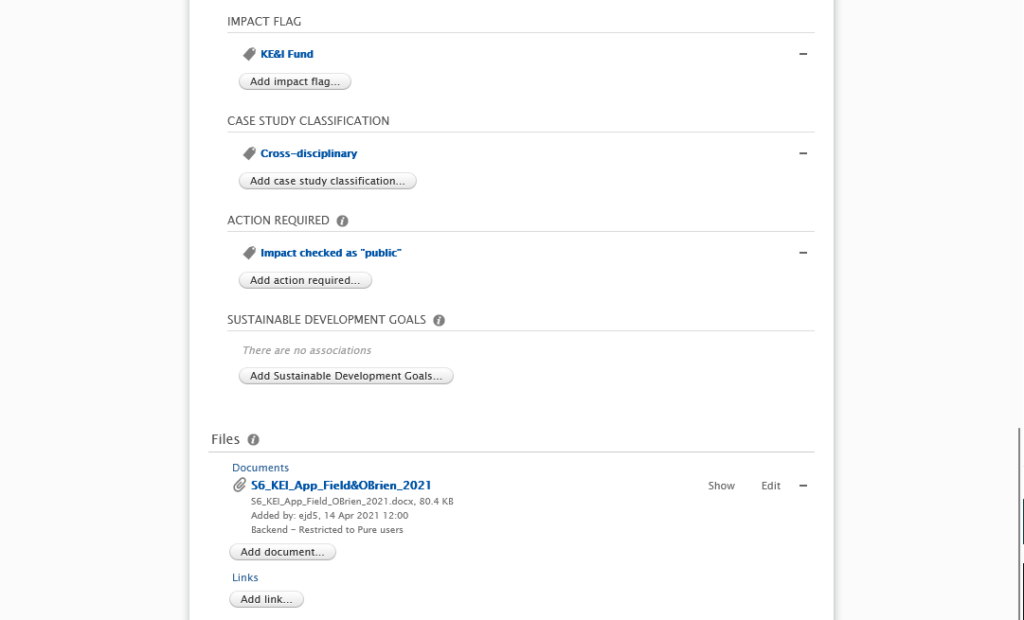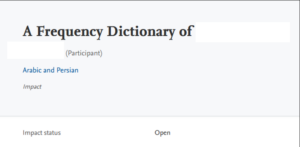The research portal can publicly display Impact entries made in Pure as part of an academic’s profile. When an Impact entry has been created, it is important to keep it up-to-date. This page will guide you in updating Pure entries as they evolve, and ‘cleaning up’ entries which were created some time ago and may need some attention.
Pure is a platform for communicating your work within the University and to external readers. It is the ‘back end’ to the ‘front end’ research portal. For Impact entries in Pure to be effective, they should contain descriptive or narrative information and they should not contain conflicting information (such as, marked ‘in preparation’ with a date in the past).
The Research Impact team sets up an Impact entry in Pure when internal Impact funding is awarded. We upload the applications and reports for the projects as we get them, but we rely on the project participants to include details and descriptions of the work. A condition of internal Impact funding is that recipients update Impact entries in Pure with information as their projects progress.
What does the Impact section of Pure look like?
At the front end, the research portal functions as a search engine. The Impact section showcases all Impact entries with their visibility set to ‘Public- No restrictions’ within Pure. This setting in Pure controls whether the entry is visible in the research portal.
What will individual entries look like?
Below is a ‘best practice’ example of a Pure Impact entry as it looks in the research portal. (Permission to reuse this information was sought and granted.)
Viewing the entry in Pure, this is what it looks like and the fields that will be visible if they are completed.
In a ‘Public – No Restrictions’ entry, these fields will all be visible:
What is and is not visible in the research portal:
Anything in the Evidence section (including attachments), Impact Flags, and Classifications, will NOT be visible on the research portal.
The Evidence section is a repository for your research impact evidence. You cannot make it visible to research portal users.
Please note that some of the flags are for administrative use only and won’t be visible to the individual users in Pure.
Files have individual visibility settings, so they can be hidden from the research portal. If you set the file as ‘Backend’ it will be hidden. This is the default setting. If you set the file as ‘Public’ it will be visible on the research portal. You can review and update file visibility settings as your project proceeds.
Links do not have individual visibility settings. Whatever you enter in the Links section will be visible on the research portal.
What should we ‘clean up’? Old or incomplete entries:
Old entries: Entries that are several years old should be checked to ensure they don’t look forgotten, e.g. that they aren’t:
- ‘In preparation’ but have an old date
- ‘Planning or development – early stage’ but with an old date
- Written in the future tense.
Incomplete entries: Entries are considered incomplete if they have very little information that will show in the Research Portal, e.g. just the basic information that the Impact team included.
Minimal entries don’t give a good impression.
Once you have updated your Pure entry:
- the visibility for the entry be made ‘Public – No Restrictions’ and
- the ‘Action required’ flag be changed to ‘Impact checked as “public”’.
If updates to the entry cannot be made or further information is not available:
- the visibility for the entry should be changed to ‘Backend – restricted to Pure users’ and
- the ‘action required’ flag be changed to ‘Impact checked as “backend”’.
Please note there is also the option to make the visibility ‘Confidential – Restricted to associated users and editors’.
If you have any questions about how to use the Pure portal, please contact [email protected]. For queries relating to Impact, including building a narrative, collecting evidence or logging relationships, please contact the Research Impact team.











